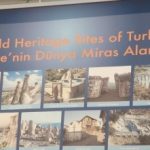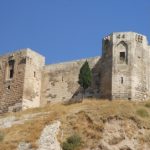Abandoned Hittite quarry
***Islahiye was damaged in the 2023 earthquakes. I have had no news on the fate of the quarry.***
If you’re staying in Gaziantep or Kilis you might want to take a side trip to Yesemek to see the evocative sights of a Hittite quarry full of half-finished basalt statues on the slopes of Karatepe (Aslanlıtepe). Yesemek itself is a pinprick of a village of no great antiquity or beauty.
The drive from Kilis to Yesemek takes you through gentle countryside, where at certain times of year you can expect to see extended families of itinerant agricultural workers busily picking peppers on either side of the road. These are then spread out to dry in the sun so that what look like a succession of red carpets roll out into the fields, adding bright splashes of vivid colour to the standard yellowy-brown of late autumn.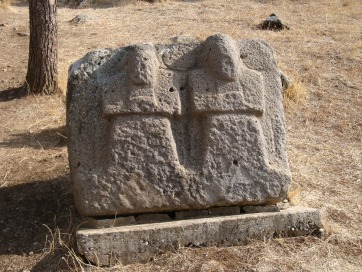
The sheer size of the quarry is in some ways a better indicator of the strength of the Hittites at the height of their powers than the better known site at Hattuşa near Çorum – to need this many statues, churned out on an almost industrial scale they must have had an extraordinary number of monumental buildings to decorate, many more than the currently excavated sites would suggest.
The site was first discovered in the 1890s by Felix von Luschan, and excavations in the middle of the 20th century uncovered some 200 half-finished orthostats, or stone statues, making this the largest sculpture workshop ever found in the Middle East. Since then another hundred or so statues have been uncovered.Some of them have been re-erected in an open-air museum on the lower slopes of the hill.
Research suggests that the quarry was active during two separate periods: during the Great Hittite era from the 15th to 12th centuries BC and then again in the Late Hittite era between the 9th and 8th centuries when it seems to have been used to supply the kingdom of Sam’al, the impressive finds from which can be seen in İstanbul Archaeology Museum.
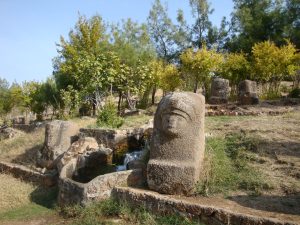 The statues, probably intended to be used as gateposts and weighing up to 15 tons each, can be divided into three main categories depicting lions, sphinxes, and bearded mountain gods who come in pairs with their arms crossed on their chests and long skirts concealing their feet. The site custodian also points out a wonderful carving of a bear-man, who could just possibly be a priest, and the two out of three surviving blocks that would together have made up a carving of an elaborately decorated war chariot with the figure of a man lying face down on the ground beneath its wheels.
The statues, probably intended to be used as gateposts and weighing up to 15 tons each, can be divided into three main categories depicting lions, sphinxes, and bearded mountain gods who come in pairs with their arms crossed on their chests and long skirts concealing their feet. The site custodian also points out a wonderful carving of a bear-man, who could just possibly be a priest, and the two out of three surviving blocks that would together have made up a carving of an elaborately decorated war chariot with the figure of a man lying face down on the ground beneath its wheels.
Yesemek is important because it has enabled archaeologists to work out how the Hittites created their sculptures even though no actual tools have been found at the site. It’s believed that the statues were delivered to their final destinations still incomplete and that the details were finished off locally.
The site has now been landscaped and a stream cascades down the hillside, injecting the pleasing sound of running water into the backdrop. It’s especially lovely in autumn when the trees are changing colour although to see these ghostly reminders of the very remote past beneath the snow is also a rare treat.
Beyond the perimeter of the landscaped area some stones still stand as they were found. Some will find this the most evocative part of the site.
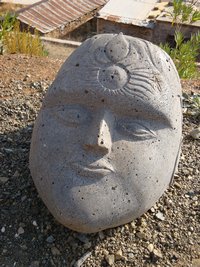 To keep alive the tradition of Yesemek as a centre for sculpture a piece of land overlooking the quarry has been levelled and students given the chance to display their work on it.
To keep alive the tradition of Yesemek as a centre for sculpture a piece of land overlooking the quarry has been levelled and students given the chance to display their work on it.
Sleeping
The most obvious base for exploring Yesemek is Gaziantep. Theoretically Kilis is another possiblity although the town has struggled to cope with the influx of refugees from Syria.
Transport info
There are minibuses from Gaziantep and Kilis to Islahiye. From İslahiye you can catch a dolmuş to Yesemek (23km) where taxis are available if there’s no service back again – very likely as services are timed to suit local shoppers rather than tourists.
Taxi drivers in Islahiye can take you to the Tilmen Höyük on the way to Yesemek. If there’s no direct bus back to Kilis from Islahiye, take one to the junction at Akbez and wait for a connection.
 Peppers drying in southern sun
Peppers drying in southern sun

